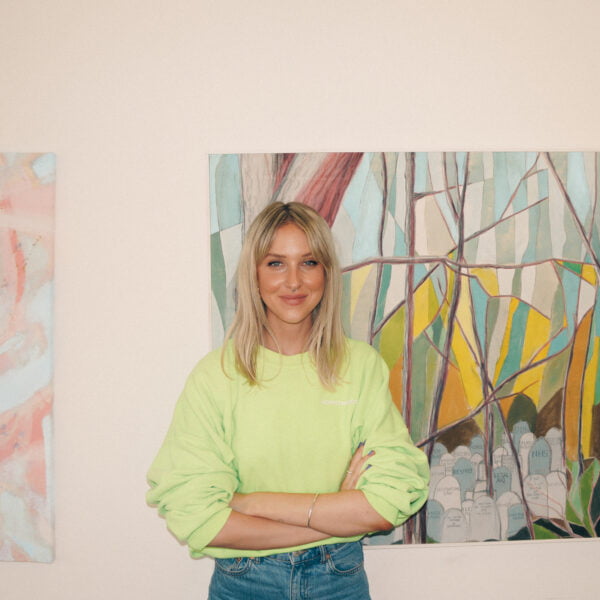
Natasha Collie
Senior Brand Marketing Manager at Penguin Random House UK
At the start of the year, Ladybird Books approached Sonder & Tell with a dream brief. In 2021, a year that’s been particularly challenging for...
In conversation with
Co-Founders Of Paynter Jacket Co.

There’s only a handful of people who would be able to turn a concept (making a limited edition chore jacket in small batches, sustainably and with purpose) into a fiercely loyal community. And then sell-out product in less than a year. Becky and Huw, founders of Paynter Jacket Co, have done just that.
With a background in marketing and fashion (Becky worked at Nike and British Fashion Council, Huw at Hiut Denim for four years under the mentorship of Do Lectures co-founder David Hieatt), the couple’s shared love of brands and doing one thing really, really well led them to an idea. It was one dreamed up on train journeys back and forth between London and Wales and then developed into a sell-out business model and independent cult brand (their last jacket sold out in just four minutes).
They lead with the craftsmanship of their jackets, buying just enough fabric to make 300 in their mill in Portugal. But at the heart of Paynter Jacket is a community engaged in the intricate design process which Becky and Huw detail through social posts and newsletters. From the copy they write on their care labels to the captions they craft under Instagram photos shot on 35mm film, they have a unique way of connecting this story to the people who covet their products.
We visited them at their makeshift office in East London to talk brand stories, building community and keeping a beginner’s mindset.
Great question. We let people in: our customers are a huge part of our design process, and their feedback genuinely makes a difference to our jackets. Once our customers have bought a jacket, they are made to order and customers will see every part of the making process of their jacket. Bigger brands who make hundreds or thousands of styles have no hope of being able to do this because they work with multiple factories all over the world. We just work with one. And our customers know all about the people who work there. We hope that we have an impact on how people buy clothing, because we make people think about the work that goes on behind the scenes, and why they love one item over another. If we could impact the way people buy clothing more genuinely, not just our jackets, that would be a job well done.
Words are so important to us. It’s a huge part of why we fall in love with brands, and feel close to brands as individuals. Because we’re only making one product at a time, we can go into extreme detail about that piece, from the words on our labels to how we describe the design details. I think we’d call it obsessive rather than intentional!


In truth there was nothing strategic about it. For the first six months of working behind the scenes on our product, and our brand, we didn’t think we had a story. We just got our heads down obsessing about our product, geeking out on the people and processes involved behind the scenes and sharing the most transparent story of building our jackets and our business. Then we got asked to talk about Paynter, pre-launch, at Hiut Denim’s Mavericks & Makers event. At that point we had to reflect and think about what our ‘story’ was. I think we realised then that our story is openly sharing our love of jackets, the work that goes into making something and educating the world about how our clothing is made. We want to make jackets that will be loved and worn into the ground.
Both… Although we’ve both worked for other brands (Huw at Hiut Denim and Becky at Nike and the British Fashion Council), we felt like total beginners when we started Paynter. Every decision on us, everything up for discussion. We love this, and the beginner’s attitude has been incredible for learning. Now we’re both full time, we’re really focused on keeping the beginner’s spirit. We’re very switched on to what brands are up to and we’re always talking about it, but we definitely like to open our eyes wider than our own industry.
Honesty, something personal and having a vision for the future are the three ingredients for an interesting story.
The product will always come first. We remake iconic jackets, so once you start to learn about the origins of that style by reading books and visiting archives, we learn countless stories that we’ve got to tell. If we had to put that into an order, it would be product, followed closely by visuals and words as we start to sample, tweak and inform our community.

Be entirely genuine, don’t make anything up.
Make sure you love what you’re doing, otherwise you’ll get bored or change your story.
Be comfortable telling it over and over again, so your community eventually start to tell your story for you.

Senior Brand Marketing Manager at Penguin Random House UK
At the start of the year, Ladybird Books approached Sonder & Tell with a dream brief. In 2021, a year that’s been particularly challenging for...

Founder Of Simple Politics
Talking about serious issues doesn’t mean defaulting into a serious tone of voice, or using complicated language. If anything, accessibility, clarity and a touch of...

Brand & Community Manager at Homethings
Creating a tone of voice from scratch can be challenging. But a blank slate to work from also mean there’s room for something a bit...

Assistant Editor at Ebury Books

Features Director at Harper's Bazaar